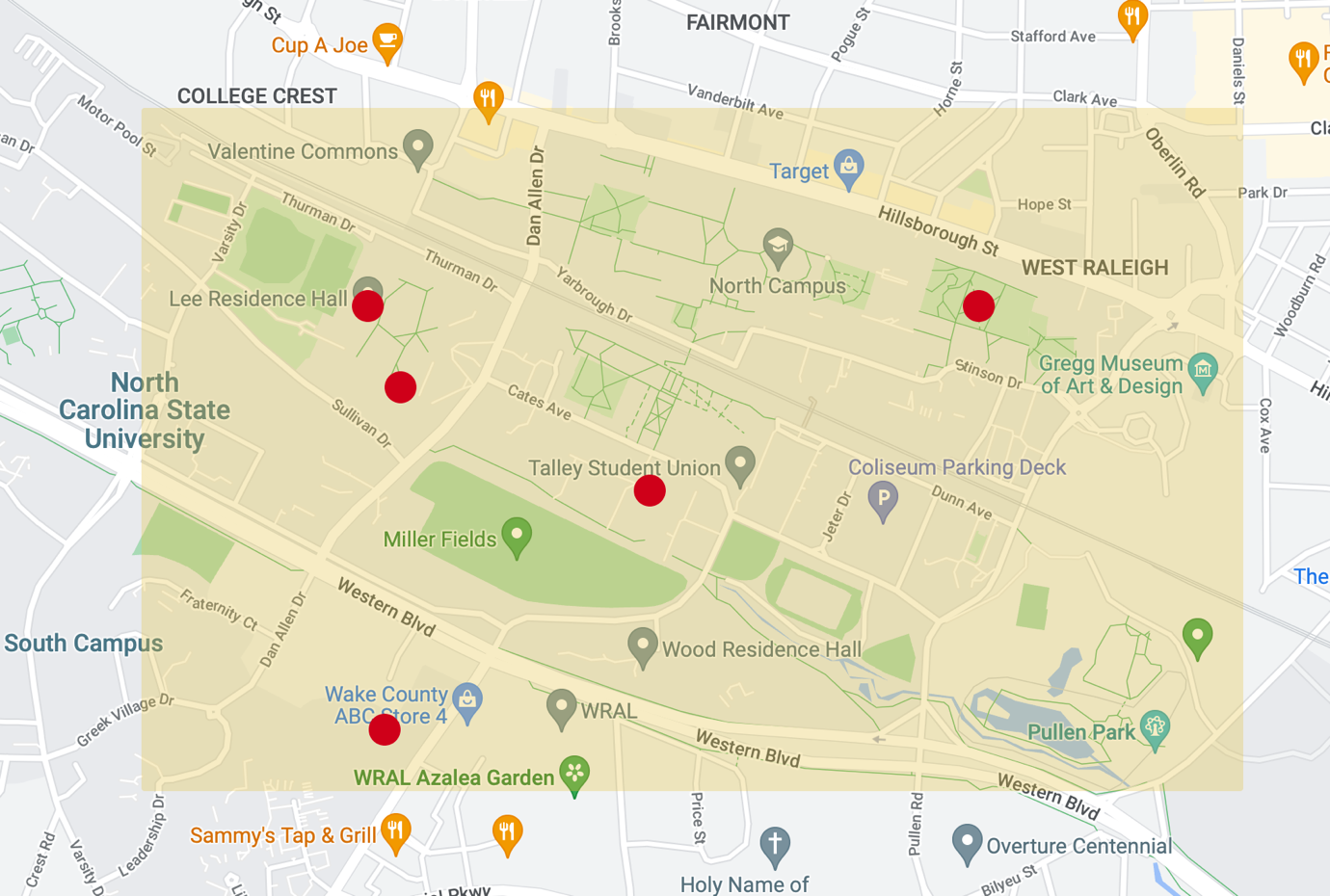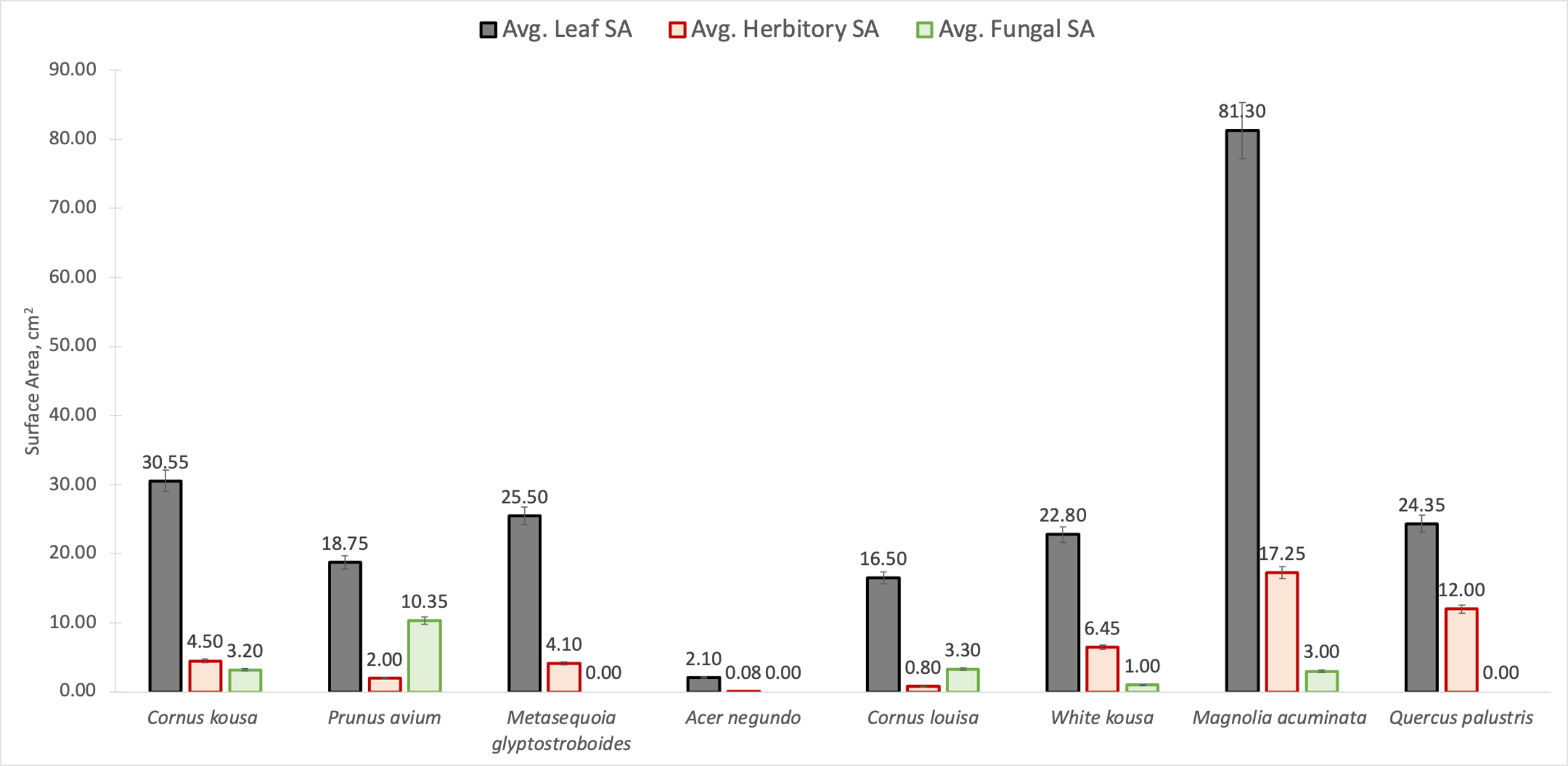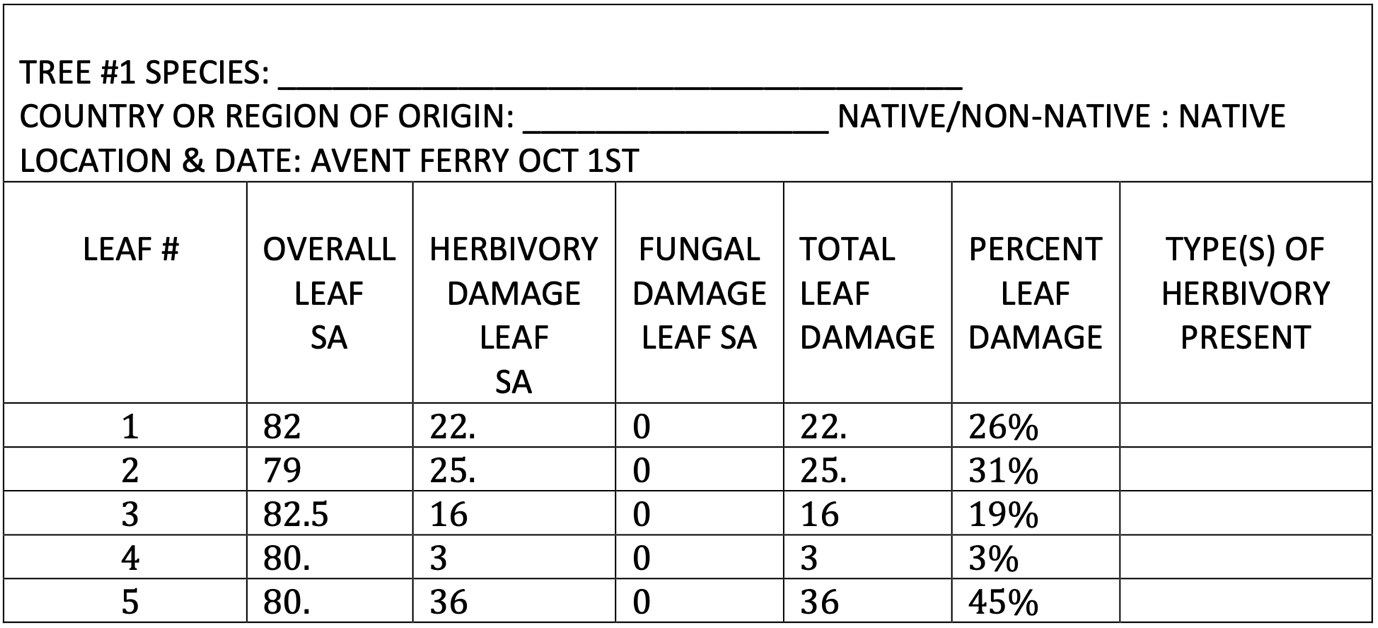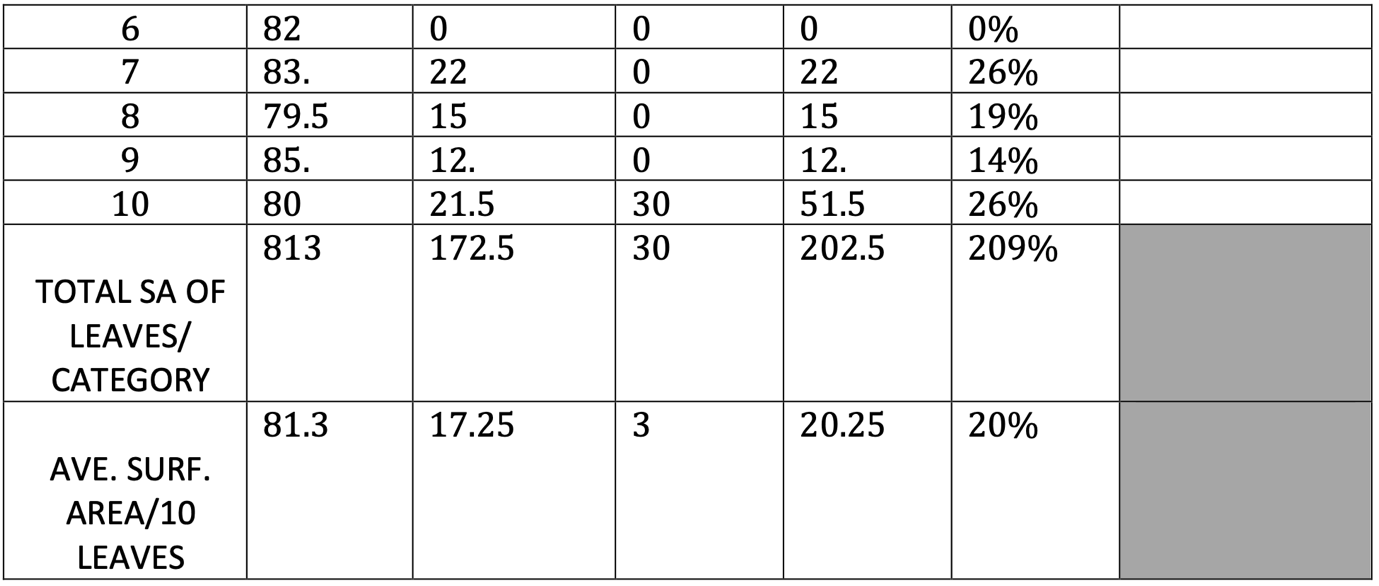Abstract
The lab report aimed to investigate patterns of leaf herbivory and fungal occurrences on trees near the university campus in Raleigh, NC, USA. To collect data, a group of four students randomly examined leaves on selected trees and measured leaf area and the area of affected fragments. The data collected found that about one-third of all areas were affected, with effects from herbivores being 1.6 times more common than from fungal infections.
Introduction
Urban trees, because of their location in a potentially polluted environment teeming with exhaust waste, garbage, and crowds of people, are more vulnerable to infectious diseases and damage from herbivores. The pathogens for such infections can be fungi that get on the tree along with the contaminants and spread quickly on the plant organism. Such a lesion results in discoloration of the leaves, a lack of moisture, and early leaf loss triggered by parasitization by the infectious pathogen. Among others, since urban trees are often grown artificially, they are less adapted to the external environment, so they can relatively quickly become targets for herbivores, whether insects, birds, or rodents. In the present laboratory work, the phenomenon of urban tree vulnerability of various species is studied in detail. One of the questions this report attempts to answer is to determine whether some plants are more bruised than others, that is, whether there is a possibility of differential damage to plant organisms within an urban community.
Methods
The methodological basis for this study was a field trial, which aimed to observe and record data at various locations in the city. For this purpose, four students within the same group independently selected a location and randomly surveyed trees for lesions using a number generator. Specifically, both the direction of travel and the selection of a particular leaf on a tree were determined by the decision of the random number generator preconfigured for the survey. This approach minimized bias in the results, introduced randomness into the sample generation, and increased the results’ reliability. An area measurement tool was used to investigate tree lesion patterns. More specifically, a translucent millimeter grid was placed on a leaf: both the area of the leaf itself and the area of infectious lesions or damage caused by herbivores were approximately determined by the number of cells involved on this grid. These numerical data were subsequently used to create tables and visual representations of the results.
Results
The observations showed that trees were differentially affected by infections and herbivores. In the first week of October, the project was conducted by four independent observers (Madison, Deborah, Aubrey, and Geraldine) combined with one student group. The prominent locations for field data collection were the Court of North Carolina, Lee Residence Hall, Fountain Dining Hall, Avent Ferry Complex, and Carmichael Gymnasium, located within walking distance of each other about one mile in Raleigh, NC, US, as shown in Figure 1. Students explored two trees at each location, pre-identified using an identification chart from the instructional materials. Table 1 provides information on which species were identified by students and used for the observational study.

Table 1. Identification results of trees used for observation with species and common names (data obtained from Group 1, 004A 2022).
For each of the eight trees, tables were created showing calculations of the total selected leaf area and area affected by fungal diseases or plant-eating animals. An example of such a table for Magnolia acuminata is shown in Appendix A. From the data collected and summarized, summary bar graphs were constructed, shown in Figure 2. As this visualization demonstrates, the ratio of lesion area to total leaf area varied for all trees. The maximum total lesion was characteristic of Prunus avium, which reached 65.9% of the total leaf area, while Acer negundo leaves were minimally affected (3.8%). Also noteworthy is that fungal infections were 1.6 times less common on average than herbivore-induced lesions. Figure 3 shows examples of what leaf lesions of both types might have looked like.


Discussion
Laboratory work aimed at a field study of leaf lesions of trees from an urban community near a university campus by fungal infections and herbivores. All of the randomly selected trees for analysis were shown to have been exposed to at least one of the factors, supporting the idea of significant lesions caused by large-scale pollution and features of a densely populated urban environment. Both traces of herbivorous animals — ants, worms, birds — and fungal infections leading to leaf depletion were found on the trees (Fig. 3). The results obtained are particularly interesting when compared to previously published scientific data. Recognizing the enormous ecosystem importance of urban trees in maintaining the biosphere cycle and creating a sustainable environment, urban management should strive to ensure tree epidemiological safety (Basu and Nagendra 1). In practice, however, the opposite is true: approximately one-third of the area of all leaves studied in this report was affected. Studies show that urban trees are more likely to be affected, which can be caused by elevated temperatures in urban communities or localized accumulation of fallen leaves (van Dijk et al. 4). Such factors, in particular, can lead to increased development of powdery mildew disease affecting, among others, plants studied in this laboratory report (Utarbaeva et al. 197). Thus, the results obtained agree with the theory and confirm the high vulnerability of urban trees.
This laboratory work has several limitations that potentially impact the accuracy of the results. In particular, the small sample size of trees (n = 8) could lead to some bias in the results. In addition, a location of diameters around one mile was chosen for the study, and broader areas were not involved, which could also be a source of error. Moreover, the weather factor, which could influence the quality of the collected data, was not considered.
Conclusion
The present laboratory work found that urban trees near a university campus appear more vulnerable to herbivory than fungal infections. The cumulative proportion of leaf lesions to the total area was 30.7%, indicating a high prevalence of lesions for trees. Meanwhile, the prevalence of leaf lesions was different from species to species and ranged from 3.8% of mean leaf area to 65.9%, which may indicate a higher susceptibility of some plant species. Overall, the work can be considered successful, as all objectives were achieved, and the results are in good agreement with scientific data.
Works Cited
Basu, Sukanya, and Harini Nagendra. “The Street as Workspace: Assessing Street Vendors’ Rights to Trees in Hyderabad, India.” Landscape and Urban Planning, vol. 199, 2020, pp. 1-6.
Group 1, 004A. 2022. Leaf Herbivory (or Urban Ecology), Biology 181 Laboratory, Biological Sciences, NC State University.
Utarbaeva, N. A., et al. “The Most Vulnerable Fungal Diseases of Trees and Shrubs in Aktobe City.” Ukrainian Journal of Ecology, vol. 10, no. 6, 2020, pp. 196-202.
van Dijk, Laura, et al. “Urbanization Affects Oak–Pathogen Interactions across Spatial Scales.” Ecography, vol. 2022, no. 1, 2022, pp. 1-7.
Webb, Elena. “How to Prevent and Treat Fungus.” PS Chicago, 2022. Web.

